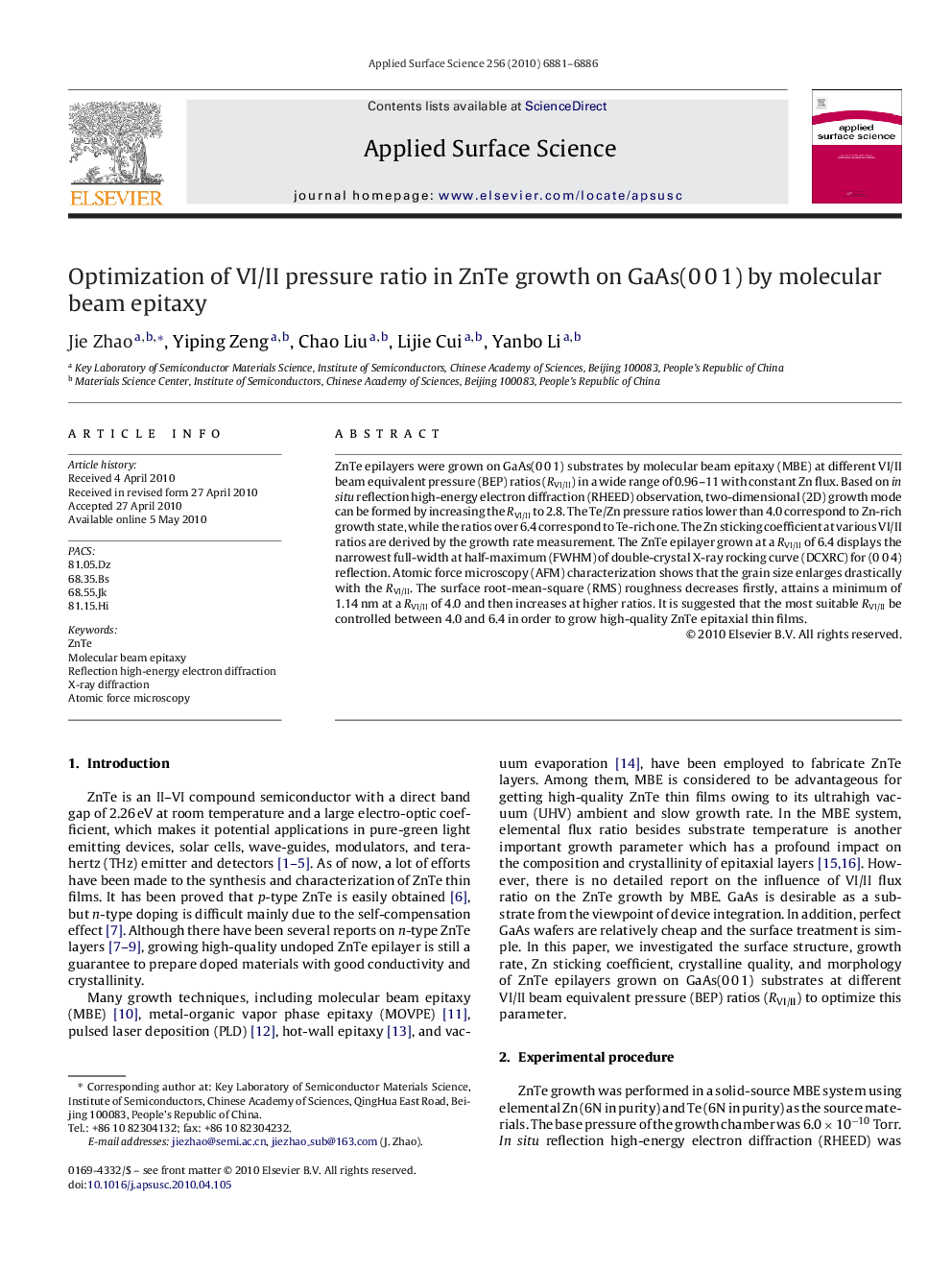| Article ID | Journal | Published Year | Pages | File Type |
|---|---|---|---|---|
| 5365514 | Applied Surface Science | 2010 | 6 Pages |
ZnTe epilayers were grown on GaAs(0Â 0Â 1) substrates by molecular beam epitaxy (MBE) at different VI/II beam equivalent pressure (BEP) ratios (RVI/II) in a wide range of 0.96-11 with constant Zn flux. Based on in situ reflection high-energy electron diffraction (RHEED) observation, two-dimensional (2D) growth mode can be formed by increasing the RVI/II to 2.8. The Te/Zn pressure ratios lower than 4.0 correspond to Zn-rich growth state, while the ratios over 6.4 correspond to Te-rich one. The Zn sticking coefficient at various VI/II ratios are derived by the growth rate measurement. The ZnTe epilayer grown at a RVI/II of 6.4 displays the narrowest full-width at half-maximum (FWHM) of double-crystal X-ray rocking curve (DCXRC) for (0Â 0Â 4) reflection. Atomic force microscopy (AFM) characterization shows that the grain size enlarges drastically with the RVI/II. The surface root-mean-square (RMS) roughness decreases firstly, attains a minimum of 1.14Â nm at a RVI/II of 4.0 and then increases at higher ratios. It is suggested that the most suitable RVI/II be controlled between 4.0 and 6.4 in order to grow high-quality ZnTe epitaxial thin films.
